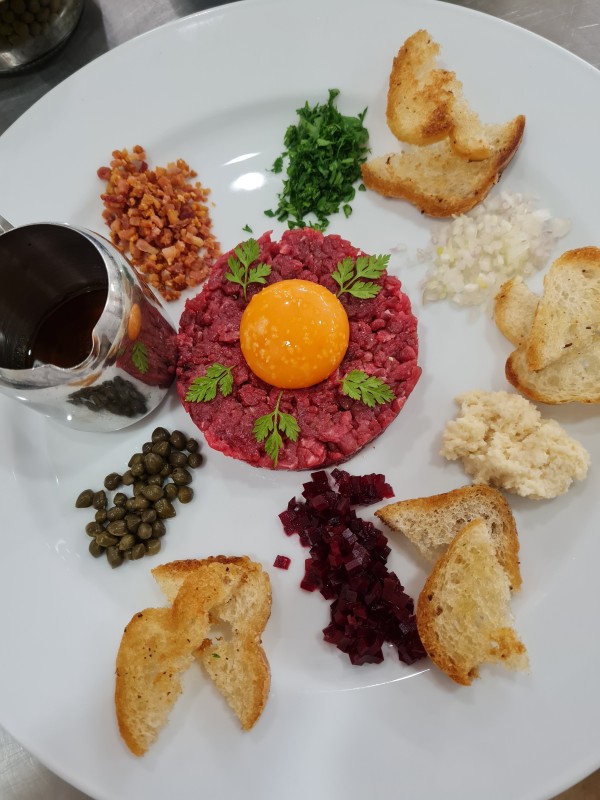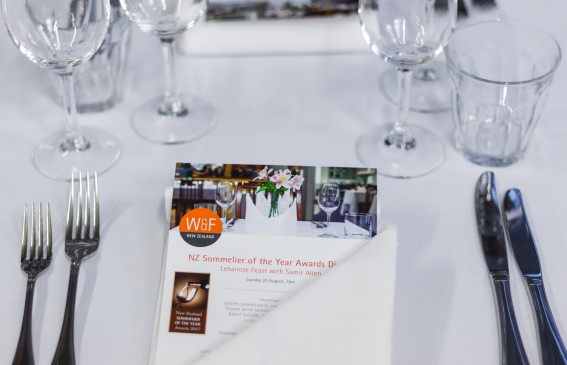Marco Polo and Steak Tartare
Marco Polo and the origins of Steak Tartare
'Then I can also tell you that people eat the raw flesh of poultry, sheep, oxen and buffalo; for the poor go to the butchers and take the raw liver as soon as it is drawn from the animal and chop it into pieces. Then they put it in a garlic sauce and eat it straight away. And they do the same with every other meat.
The gentlemen all eat raw meat too, but they have it finely minced and then put it in the garlic sauce mixed with choice spices, which they eat it with as much pleasure as we do cooked meat.' [1] Marco Polo, The Travels p.158.
In this book, Marco Polo refers to the Mongol tribes as Tartars. This became the common term used in Europe, however, they were not Tartars, who are another ethnic group but Mongols. Under Genghis Khan (c.1162–1227) and his descendants, the Mongol tribes invaded vast areas of Asia, Middle East and Eastern Europe.
Marco Polo‘s book was so well read across Europe, over many centuries. It was an adventure story although European readers had no context or sense of the geography of Marco's journey; the different cultures and languages and enormous wealth that he described. It was the term, Tartar that people remembered.
From my research, it would appear that Marco Polo's use of the word Tartar, is the basis of the dishes that we refer to as Tartare. This includes Steak Tartare and Tartare Sauce. One could surmise that when cooks began to experiment with preparing raw meat to eat, as described by Marco Polo in Yunnan province, they adopted the word, Tartare.
Later, during the Siege of Paris (1870-71), when food was scarce, thousands of horses were killed for food, including an elephant from the zoo at Les Jardin des Plantes. Steak Tartare; diced raw meat that required no cooking, emerged as a dish of necessity. Today, it remains a classic dish within Western gastronomy.
Marco Polo can confidently be credited as the inspiration behind the dish, Steak Tartare. Celia Hay, 3/10/2025
Debate on the orgins of Steak Tartare
Here are some other commentaries on Steak Tartare.
Oxford Companion to Food: Steak Tartare
'Steak Tartare is a raw steak, beef or horse meat, chopped and seasoned and presented with accompaniment such as onion, parsley, and capers, often with a raw egg yolk as a finishing touch. In Belgium, particularly Flanders, it is known as filet americain.
The origins of steak tartare are weighted with myth, usually involving the Russians learning the dish from their Tatar conquerors, then exporting it to Europe via German contacts in the 19th century. American scholars suggest it reached their shores through German migrants, figuring on German-American restaurant menus with other favourites such as Hamburg steak and Weiner schnitzel.' [2]
Horse Meat?
During the Siege of Paris (1870–1871), a fresh meat shortage forced Parisians to slaughter and butcher an estimated 65,000 to 70,000 horses including champion racehorses of Napoleon III now exiled in UK. The siege popularized horse meat in Paris, and it remained a popular protein until the 21st century.
Meat under the saddle?
Another story, relates how the Mongol warriors would put slices of meat under the saddle on their horse to tenderise it while they were riding...
INTERNET searches on Steak Tartare not correct?
This statement is incorrect: Chef Auguste Escoffier who first listed "Steak à la tartare" in his 1922 cookbook, defining it as steak à l'Americaine served with tartar sauce. It remains unclear, why this recipe was named, l'Americaine.
In the American edition and translation, of Chef Auguste Escoffier's La Guide Culinaire (1903), there are only 2 references to à l'Americaine. The recipe below is the basis of current web searches on Steak Tartare, however this would not be regarded as classic by many chefs today.
Escoffier Beef Hash American style: Hachis de Boeuf à l'Americaine 1178 [3]
- Cut the meat into cubes.
- Also cut into dice the same weight of potatoes as of meat.
- Season these potatoes and toss them in butter.
This is done, put half of them into a saucepan with the meat dice, and combine the whole with a few tablespoons of tomato sauce (recipe 29) and reduced veal gravy (recipe 42).
Heat without allowing to boil; serve in a silver dish; distribute the remainder of the potatoes, which should be crisply fried, over the hash, and sprinkle with a pinch of freshly chopped parsley. [3] View a digital copy of the Escoffier Cookbook.
In French term 'hachis' refers to a dish made with finely chopped or minced ingredients, typically meat.
Larousse Gastronomique Steak Tartare Recipe [4]
- Mince 150 to 200 g of lean beef, rump steak sirloin or top rump.
- Season with salt and pepper, a little cayenne, a few drops of Worcestershire sauce or Tabasco.
- Shape the meat into a ball, place it on a plate, hollow out the centre and put a raw egg yolk in the hollow. Around the meat arrange 1 tablespoon each of chopped onion, chopped parsley and chopped shallots and one teaspoon drained capers. Serve with tomato ketchup, olive oil and Worcestershire sauce.
New Zealand School of Food and Wine Steak Tartare Recipe

Serves 1- 2 people: Ingredients
|
|
Method
- Finely dice the meat.
- Finely dice gherkins, shallots, capers, anchovies and parsley.
- In a bowl, combine all the all the ingredients except for the meat to make a dressing.
Option 1: Add dressing to the meat. Plate. Season to taste. Garnish with egg yolk. Serve
Option 2: Place the dressing in a jug. Place the meat in the center of a plate. Use a ring mold if possible. Place egg yolk in center of diced meat. The condiments can be placed around the rim of the plate. - Serve with bread or toast.
Key Tips for Making Gordon Ramsay’s Steak Tartare
https://gordonramsayeats.com/gordon-ramsay-steak-tartare/
- Use the freshest beef possible– A high-quality fillet or tenderloin is best.
- Chop the beef by hand– Ensures the right texture and avoids mushiness.
- Keep ingredients cold– Helps maintain the right consistency and freshness.
- Balance the acidity and seasoning– Adjust lemon juice, Worcestershire, and mustard for the perfect taste.
- Serve immediately– Steak tartare should be eaten fresh for the best flavor and food safety.
- Use a ring mold for presentation– Creates a professional, restaurant-style look
End notes
1. Cliff, N., (2015) Marco Polo, The Travels p.158
2. Davidson., (Ed). (2014). Oxford Companion to Food (3rd edition.). p.809
3. Escoffier, A., (1903) The Escoffier Cookbook, English Translation., p.400
4. Larousse Gastronomique (2009). p1062
References
Cliff, N., (2015). Marco Polo, The Travels. Penguin Books, UK
Davidson, A. (Ed.). (2014). The Oxford Companion to Food (3rd ed.). Oxford University Press.
Escoffier, A., (1969). The Escoffier Cookbook, Guide to the Fine Art of French Cuisine, Random House, NY
Larousse Gastronomique, (2009) Octopus, UK
McGee, H., (2004) On Food and Cooking, An enclylopedia of Kitchen Science, History and Culture, Hodder & Stoughton, UK
Fall of Civilizations Podcast: The Mongols - Terror of the Steppe
https://www.youtube.com/watch?v=PdFwMDuAnS4





